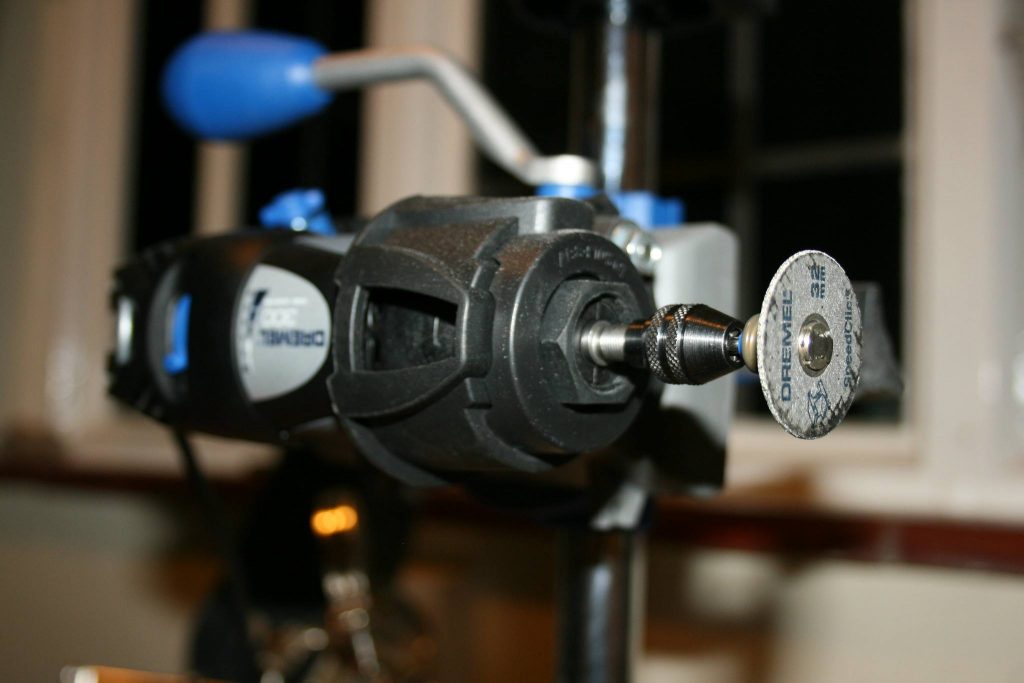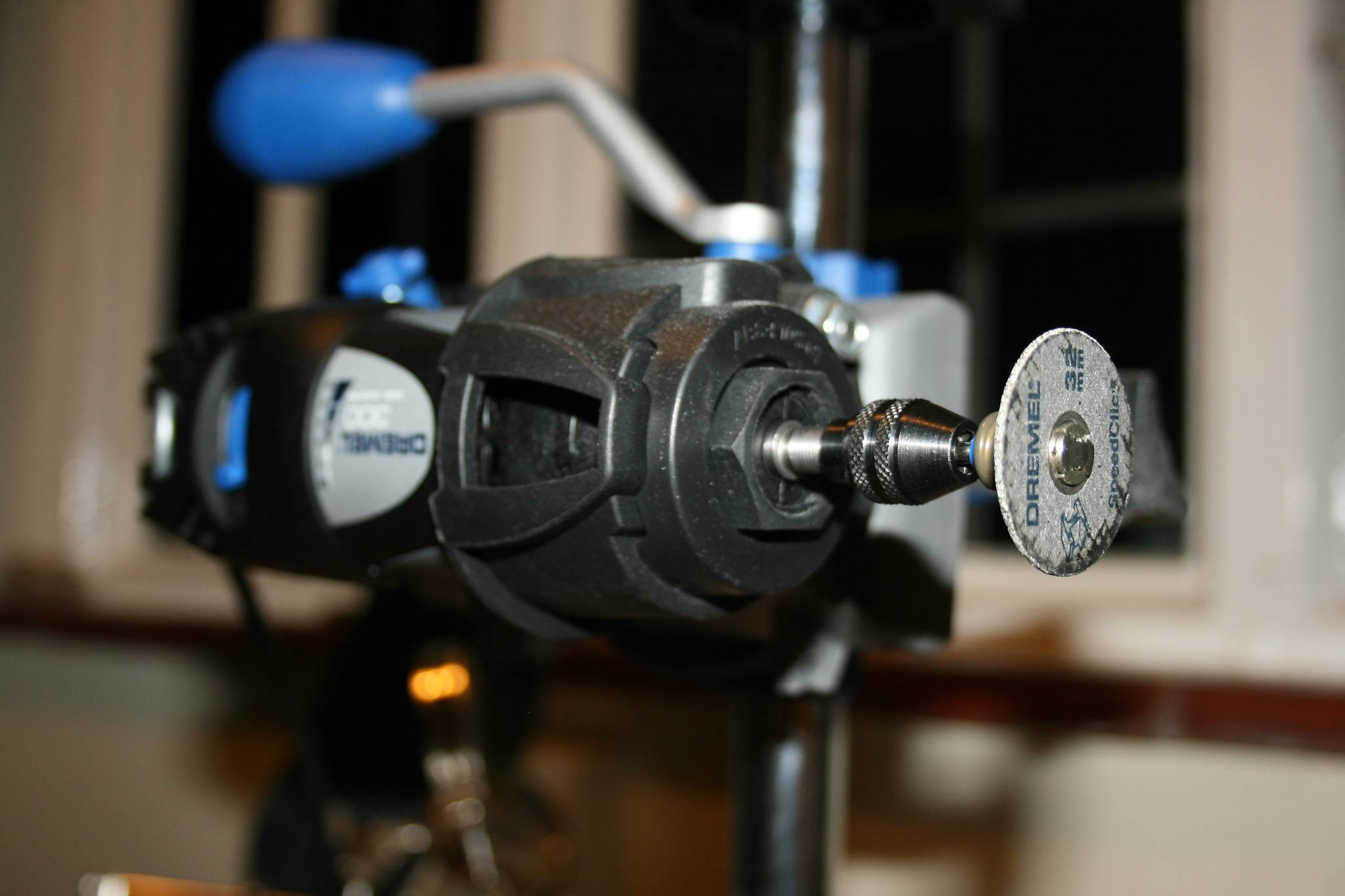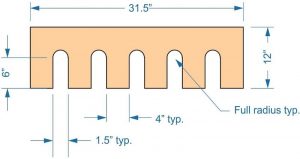The amazing Dremel rotary tool has been with us for almost a century. Invented in 1932 by a man named… you got it, Dremel, this compact rotary tool is capable of mimicking the work of larger, more cumbersome tools, such as drills, grinders, routers and scroll saws. Its compact size and light weight make it ideal for use on detail work, where a larger, heavier tool may make it difficult to maintain accuracy.
Many people think of the Dremel tool as something for model makers and hobbyists, nothing more. But this compact tool is a powerhouse, able to do many woodworking tasks, especially when detail work is needed.
A large part of what makes the Dremel tool so effective is that it packs a lot of power into a very small package. For a tool that’s considered “pencil” size, Dremel tools rotate at up to 35,000 RPM and have motors up to 1.8 amps. While that’s not anywhere near as powerful as a full-size drill or router, it works with much smaller bits too; so that 1.8 amps is actually quite a bit of power. The tools are available in either corded or cordless varieties.
The other thing that makes the Dremel family of tools so useful is the wide range of quality bits that have been designed to work with them. Dremel’s bits allow you to work in just about any material, doing a wide range of cutting, grinding, engraving and shaping tasks. Anything you can do on a large scale with larger tools, you can probably do with a Dremel on smaller projects, as there is probably a bit made just for that task.
The Best Way to Cut Wood with a Dremel
There are actually more than one Dremel bit that can be used for cutting wood. Dremel tools have long been used for cutting small pieces of wood, especially for model making. While I would never recommend trying to cut off a 2”x 4” with a Dremel tool, if you’re trying to do detail work, like inlays or working with fine trim, a Dremel tool is excellent.
Originally, the Dremel bit which was most useful for cutting off pieces of wood was a simple circular saw blade, like the 546. Of course, that was somewhat limited, as the diameter of the saw blade was less than that of the tool. So if you wanted to cut off the end or perhaps cut a small mortice, it worked well, but that was it.
In more recent times, the Dremel company has come out with the 543 and the EZ544 cutting shaping wheels. Both work the same, with the 543 being mandrel mounted and the EZ544 designed to be used with the EZ Lock, quick-change collet system.
The 543 and EZ 544 wheels look somewhat like one of the more complex “combination” circular or table saw blades, with small teeth, interspersed with large chip removal areas. This allows for the blade to cut quickly, as it doesn’t get clogged up with chips easily. That makes it ideal for cutoff work on wood, assuming you’re trying to make a straight cut.
Spiral Cutting Wood
There are many times when a straight cut isn’t what you want. But that’s okay, as the Dremel tool can handle those cuts too. All it takes is a change of bits and the addition of an accessory base.
A number of the Dremel tool kits come with their router base attachment. While there are more complicated router bases available for Dremel rotary tools, including a plunge router attachment and a router table attachment, I’m referring to the simple one which replaces the front locking nut and provides a stable 90 degree base, with some depth adjustment; their model #565.
This tool can be used extremely well with a spiral cutting blade. These blades are different than drill bits, in that they are designed to cut along the entire length of their flutes, not just at the tip. In this, they are like an end mill. Such a bit can be moved laterally through a piece of wood, cutting as it goes. You could literally use it as a cutoff tool for one-by dimensional lumber, but it’s best used for making curved cuts.
The router base and spiral cutting combination make the Dremel tool work even better than a scroll saw or jigsaw for intricate cutting of curved lines. It is able to plunge cut and you can easily follow any contour which is at least as large as the diameter of the spiral cutting bit.
Working with this combination allows you to cut out intricate shapes, circles or insets for hardware. If you don’t have a hole saw the size you need, just lay out the circle with a compass and cut it with your spiral cutter. This particular combination is extremely versatile.
Cutting Drywall with the Spiral Cutter
The same spiral cutting bit can be used for cutting drywall, especially cutting out for electrical outlets and switches. But there is also a special bit for use in drywall. The main difference is that the flutes of this bit are spaced farther apart than those of the normal spiral cutter, helping to reduce chances of the bit getting clogged with packed dust from the cut.
Tile & Grout Cutting
Just as there is for drywall, there is a special spiral cutting bit for use with ceramic tile. Rather than having the flutes farther apart, this tool has them closer together, allowing more cuts per minute, a necessity for that harder material. This tool can be used for making intricate cuts in tile, allowing you to cut profiles to go around hardware or molding.
There are also grout removal tools for the Dremel, making it possible to remove grout for replacement, without having to demolish the entire wall.
Using the Dremel Tool as a Router
The Dremel is also able to be used as a router, either with the simple base I just mentioned, with the plunge router base or with router table. Dremel produces seven different router bits, covering the most common routing needs. In addition, a number of aftermarket companies provide router and engraving bits that can be used with the Dremel system.
The Dremel Rotary tool uses a collet system, rather than a chuck, making it easy to fit a number of aftermarket bits into the tool and hold them securely. Overall, collets hold more securely than chucks, because of the greater surface contact.
When using the Dremel as a router, you can make rabbet cuts, cut molding onto the edges of boards, cut slots into pieces of plywood, chamfer and round edges. These are smaller cuts than you would normally make with a router, as the size of the bits is smaller. Nevertheless, for detail work, they are ideal.

Carving and Engraving with the Dremel Tool
The place where the Dremel really shines is when you want to do carving and engraving. The small size and light weight of the tool make it ideal for carving detail work into your woodworking projects. A wide variety of high speed steel and tungsten engraving and carving bits are available, allowing you to do a wide variety of different cuts from 1/32” up to 5/16”. Of course, larger cuts can be made in multiple passes with a larger size bit.
In past times, one of the signs of quality woodworking was the amount of detail put into the piece. Detailed carving on any part of a piece of furniture made it clear that it was made by a master craftsman.
With a Dremel tool, it is easy for just about anyone to do this relief carving. The rotary action makes it possible to do extremely accurate cuts, greatly reducing the training and practice time needed for relief carving. Compared to working with a variety of chisels, as our ancestors had to, carving with a rotary tool like the Dremel is more like drawing out the relief design you want to create.
Keep in mind that not all Dremel carving bits are designed for woodworking. The diamond point and structured carbide carving bits are actually designed for working in harder material. However, all the others can be used in carving wood.
Dremel also provides an assortment of sanding options, including drum, disk and flap sanders. There are grinding wheels also, but these are not recommended for use on wood. For a complete chart of all Dremel bits, click here.




